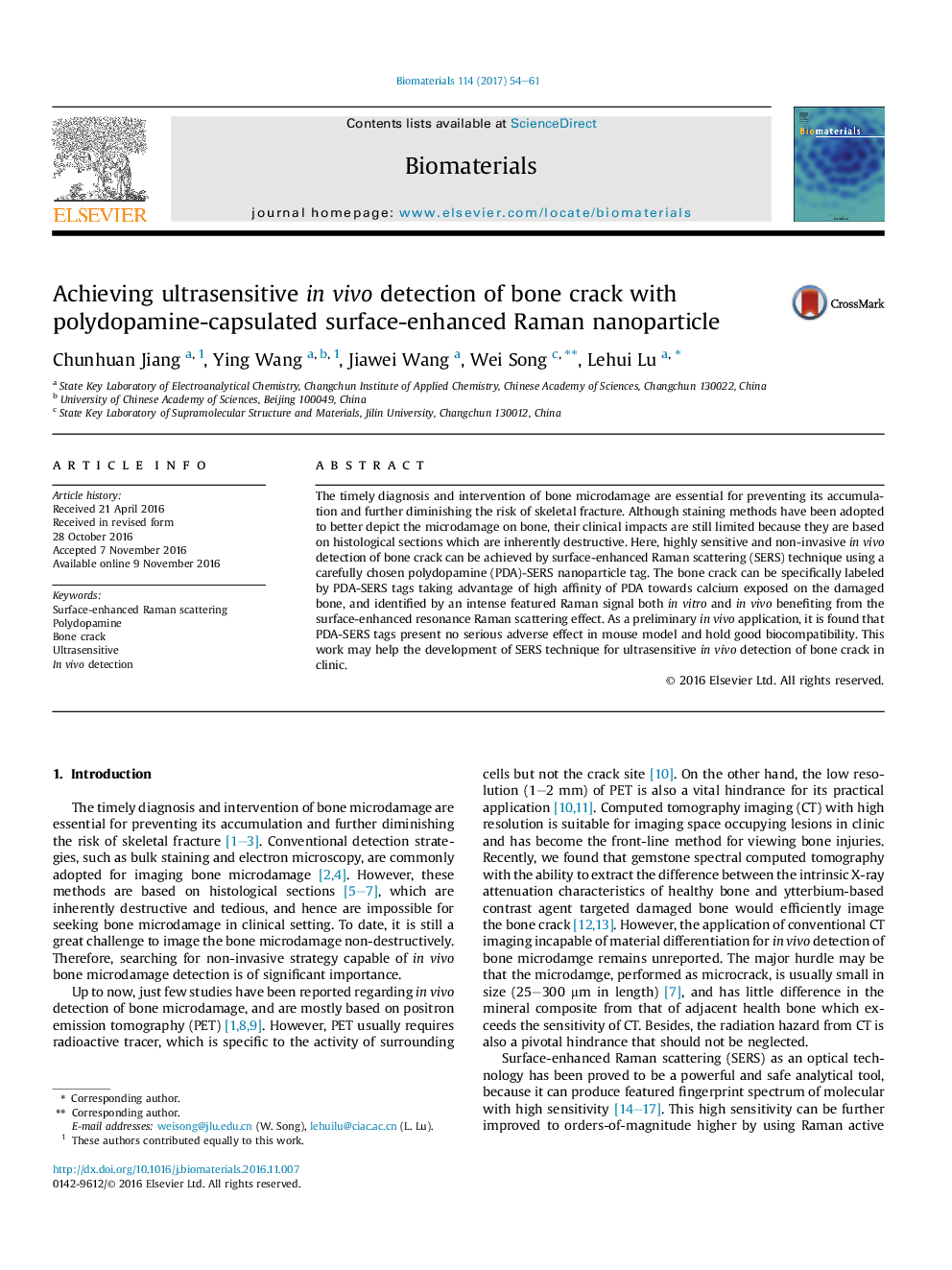| Article ID | Journal | Published Year | Pages | File Type |
|---|---|---|---|---|
| 6451028 | Biomaterials | 2017 | 8 Pages |
The timely diagnosis and intervention of bone microdamage are essential for preventing its accumulation and further diminishing the risk of skeletal fracture. Although staining methods have been adopted to better depict the microdamage on bone, their clinical impacts are still limited because they are based on histological sections which are inherently destructive. Here, highly sensitive and non-invasive in vivo detection of bone crack can be achieved by surface-enhanced Raman scattering (SERS) technique using a carefully chosen polydopamine (PDA)-SERS nanoparticle tag. The bone crack can be specifically labeled by PDA-SERS tags taking advantage of high affinity of PDA towards calcium exposed on the damaged bone, and identified by an intense featured Raman signal both in vitro and in vivo benefiting from the surface-enhanced resonance Raman scattering effect. As a preliminary in vivo application, it is found that PDA-SERS tags present no serious adverse effect in mouse model and hold good biocompatibility. This work may help the development of SERS technique for ultrasensitive in vivo detection of bone crack in clinic.
Graphical abstractDownload high-res image (215KB)Download full-size image
